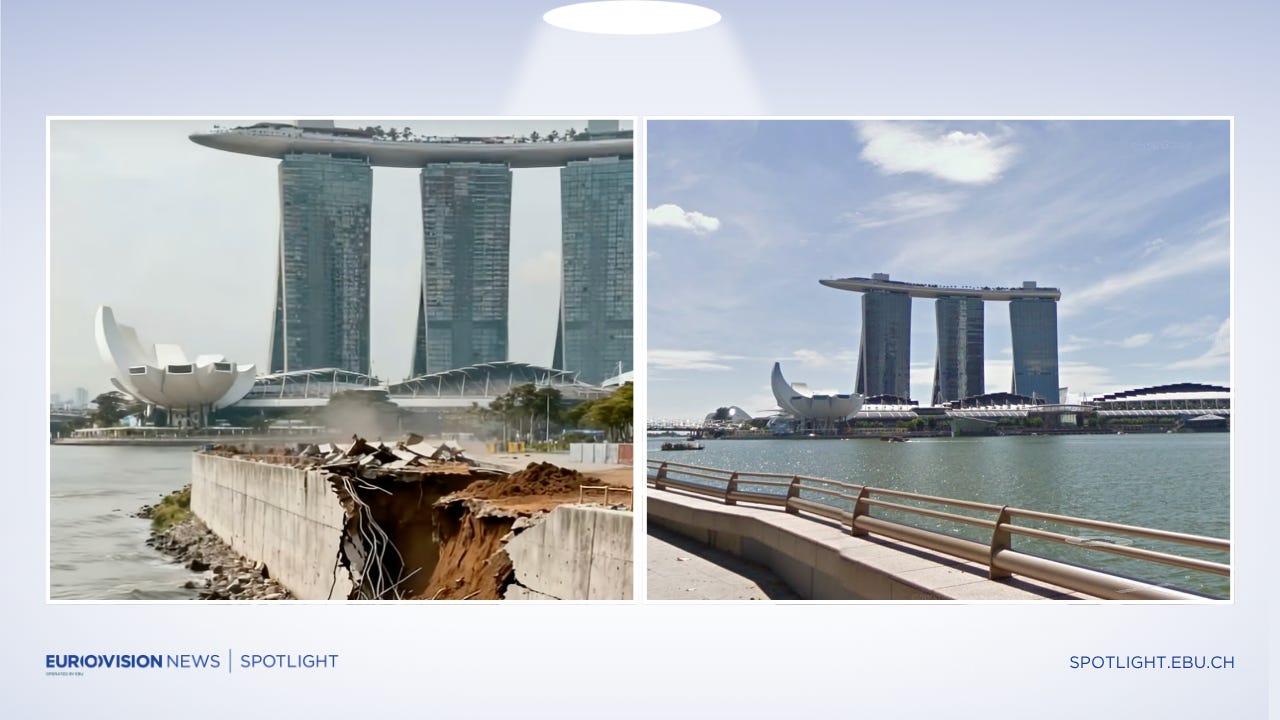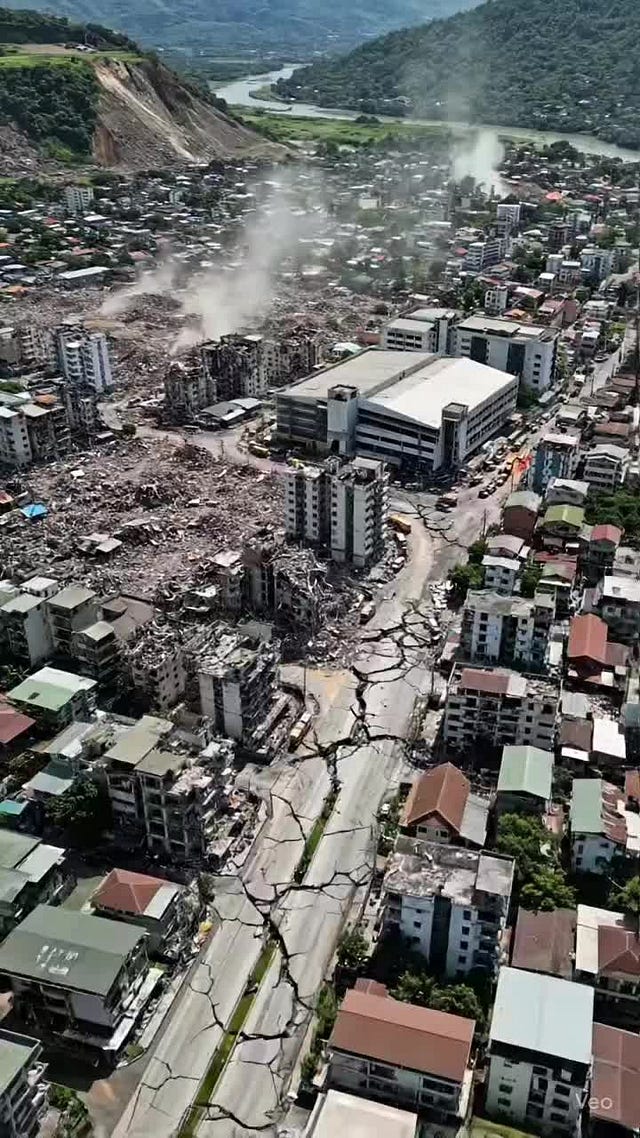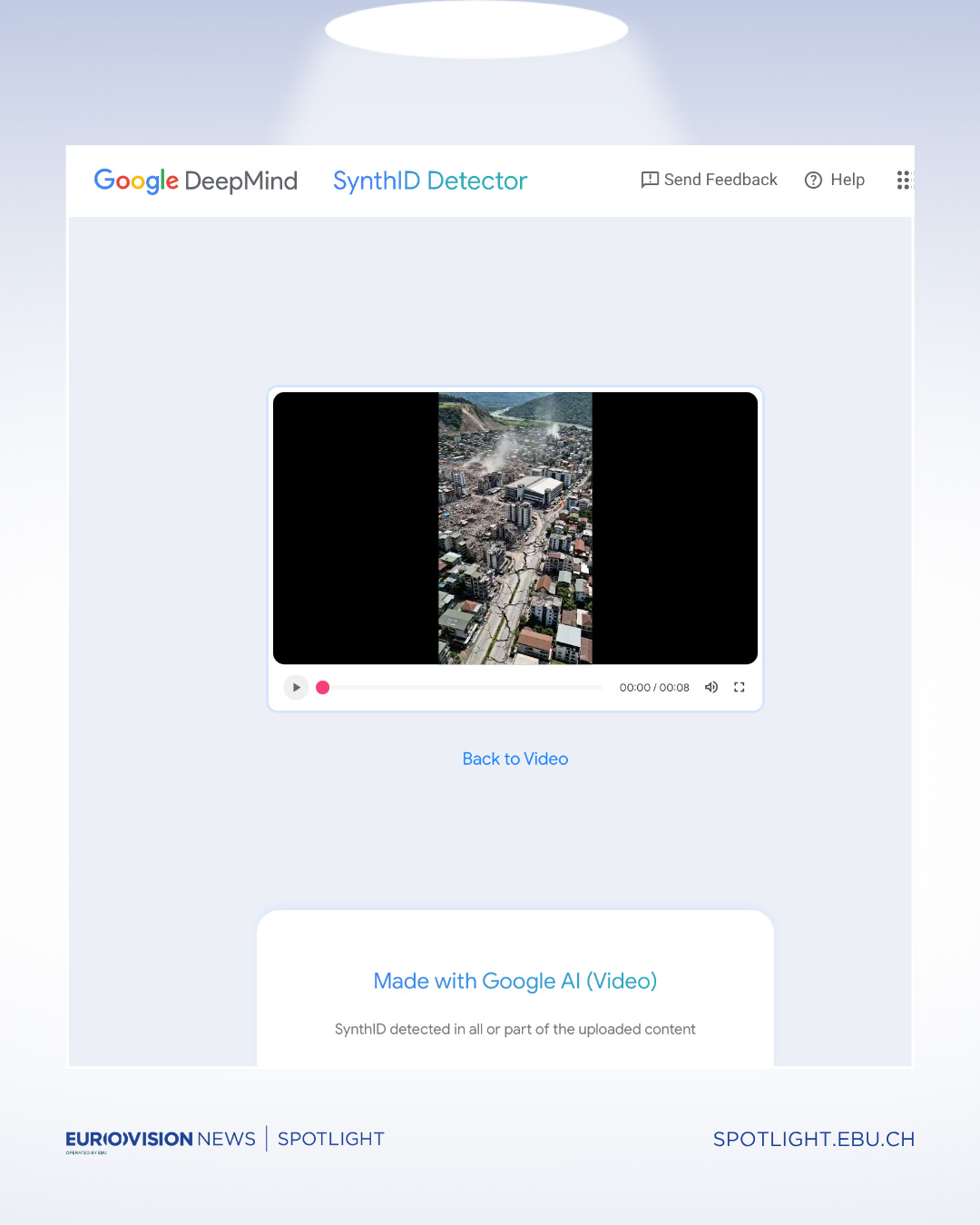AI-generated footage falsely used to show 'aftermath' of Philippines earthquake
Fake content exaggerating a disaster can perform well on social platforms, due to its potential to incite even more fear and anxiety
CLAIM: Videos circulating online purported to show various scenes in the aftermath of an earthquake in the Philippines.
BACKGROUND: The 6.9-magnitude quake struck the Cebu region of the Philippines late on September 30, with rescue operations still underway on October 1. At least 69 people were killed, and almost 150 more were reported injured.
METHOD: Visual analysis, use of an AI detector tool, and research using reputable news and government sources confirmed these videos to be false and AI-generated.
RATING: Despite a lack of AI labelling, the clips were found to be AI-generated.
At least 69 people were confirmed dead on Wednesday, October 1, after a magnitude 6.9 earthquake hit the Cebu region of the Philippines late the previous evening.
A major rescue and recovery operation was underway after the quake caused widespread damage to infrastructure and tore down buildings. Authorities said close to 150 people were injured.
It was the deadliest earthquake in the Philippines since 2013. Videos circulated online of drivers navigating shuddering roads and churches being damaged as the earth shook. Aftershocks were still being felt on October 1, as authorities rushed to restore power and other essential services before another nightfall.
While many of the videos that circulated online were real, such as a historic church partially collapsing and a highway bridge shaking as the quake struck, there were also cases of misrepresented and false content being shared in the immediate aftermath.
While never a good thing, floods of disinformation are particularly unwelcome at a time of crisis, when vulnerable and distressed people are taking to the internet to seek updates and and advice amid a calamity.
‘Aftermath’ aerial footage is actually AI
One video that circulated on TikTok appeared to be filmed from the air and showed a city in complete disarray, with collapsed buildings and piles of rubble seen everywhere. In just eight hours, the video had garnered more than 760,000 views and over 13,000 likes.
The footage, titled ‘Aftermath of 6.7 Earthquake #earthquakecebu’, showed scenes of devastation far greater than what has been officially reported in Cebu. For example, entire blocks were reduced to rubble, and several of the buildings that still stood were partially destroyed or covered in debris. As well as music playing over the aerial clip, the sound of a helicopter could be heard.
 Tiktok failed to load.
Tiktok failed to load.Enable 3rd party cookies or use another browser
The clip immediately raises some red flags as being potentially AI-generated — its short length, its high quality resolution — a suspicion that is confirmed by the small ‘Veo’ logo in the bottom right corner. Veo is Google’s text-to-video model, which has become a regular feature in our fact checks in 2025 as one of the most sophisticated video generators currently on the market.
Google’s own AI detector SynthID, which can pick up on embedded watermarks in a piece of content generated by a Google AI product, confirmed the clip was generated by its model.
Even though some commenters attempted to argue that they did not believe the video showed Cebu City, plenty were still tricked. The content was not labelled as AI-generated by the creator. This highlights the issue with the self-labelling system on TikTok and Instagram, which relies on the user to disclose when they use AI-generated content. There is no platform-side system for checking and flagging content that may mislead users.
No evidence of Singapore ‘tsunami’
Another video we found in circulation showed an embankment collapsing in Marina Bay, Singapore, apparently after the earthquake. The video was titled: “Tsunami Hits Marina Bay After Massive Earthquake!”
However, there was no evidence of any damage, tsunami, or even tremors in Singapore after the earthquake struck the Philippines. No tsunami warning was issued for the wider region after the earthquake struck the Philippines.
The location seen in the video is recognisable as the Marina Bay area of Singapore, with the Marina Bay Sands hotel and the ArtScience Museum visible in the background. However, there is no evidence that there was any damage from a tsunami or earthquake in Singapore.

The video also has a high-definition, slow-motion quality that is commonly seen in AI-generated content. The men seen in the lower part of the clip are at first unmoving, until they start to run unnaturally when the bank collapses. AI video generators often have a logo or watermark in a lower corner of the frame, which is in this case covered by a text box saying “Marina bay”. This may be covering an AI logo.
Singapore does not typically suffer from seismic activity as it is located outside earthquake zones and is far from the edges of the region’s tectonic plates. Occasionally, there are low-level tremors that are mostly caused by earthquakes in Sumatra, according to a public library information site, but these are not normally powerful enough to cause serious damage. Tsunamis are possible, but the city state is protected by the Indonesian archipelago, which acts as a barrier.
With the quake mainly concentrated in the Philippines, content like this seeks to widen the scope of the panic that such a disaster can trigger — leading to more views, engagement, and a larger overall audience. Viewers should beware if they see content purporting to show incidents that are not being reported by reputable outlets, and seek additional sources when they encounter videos like this.
SOURCES
Portugal, A. and Lopez, E. (2025). Rescuers hunt for survivors after Philippines’ deadliest quake in over a decade kills at least 69. [online] Reuters. [Accessed 1 Oct. 2025].
Tiktok.com. (2025). TikTok - Make Your Day. [online] Available at: Aftermath of 6.7 Earthquake #earthquakecebu [Accessed 1 Oct. 2025].
Youtube.com. (2025). Available at: Tsunami Hits Marina Bay After Massive Earthquake! [Accessed 1 Oct. 2025].
NLB. (2025). Earth tremors in Singapore. [online] Nlb.gov.sg. Available at: https://www.nlb.gov.sg/main/article-detail?cmsuuid=faae6249-89e7-4903-af54-809278f37345 [Accessed 1 Oct. 2025].
Service, N.W. (2025). U.S. Tsunami Warning Centers. [online] Tsunami.gov. [Accessed 1 Oct. 2025].
Earth Observatory of Singapore. (2025). Can Singapore be affected by a tsunami. [online] [Accessed 1 Oct. 2025].




